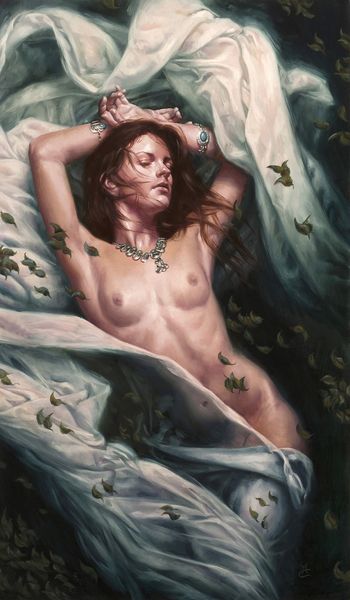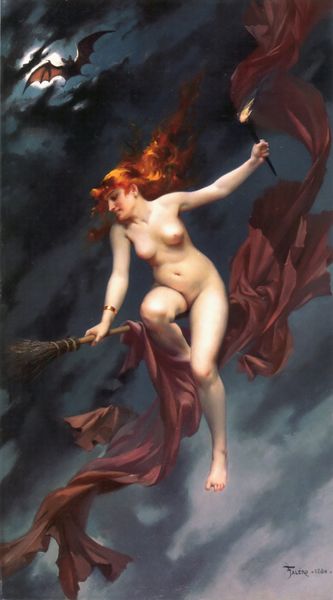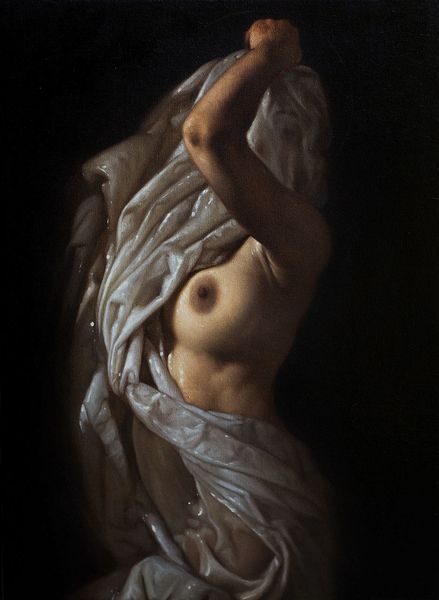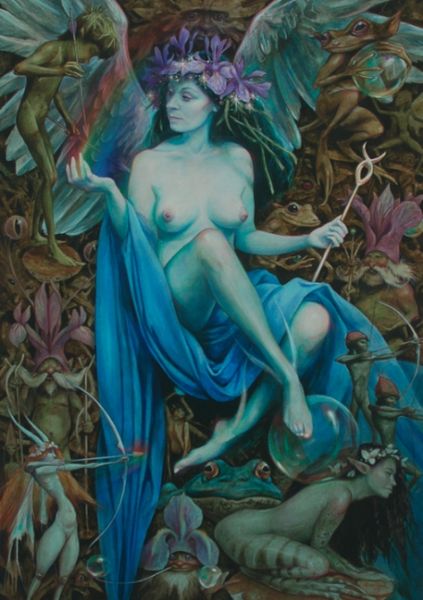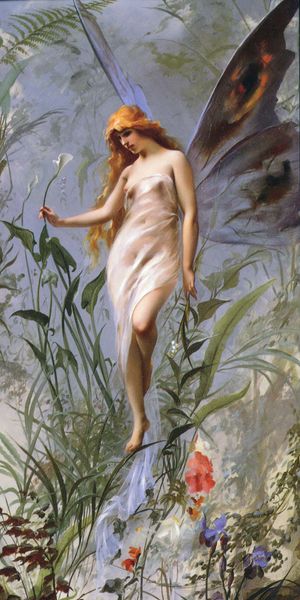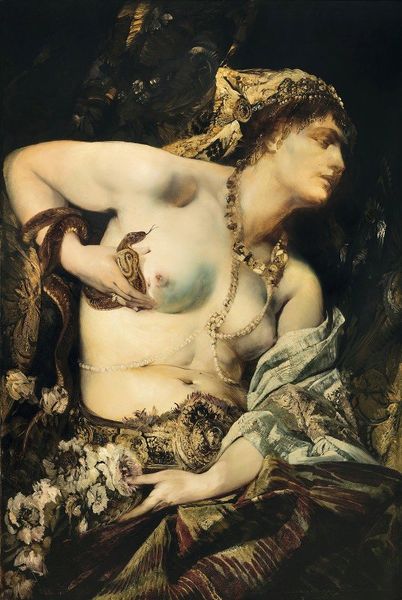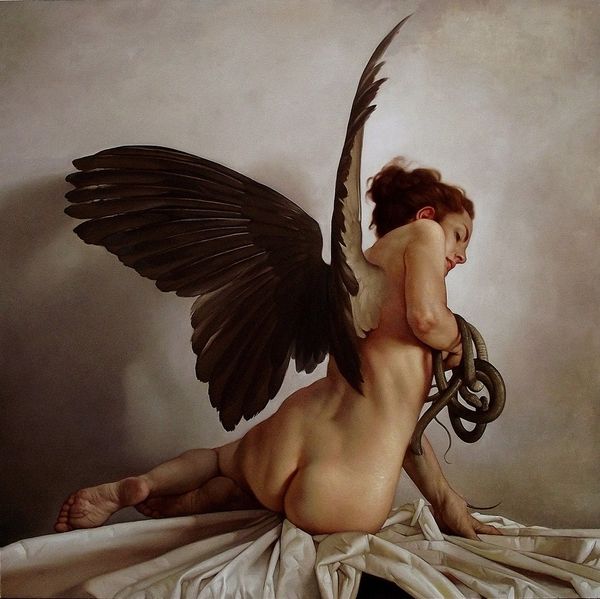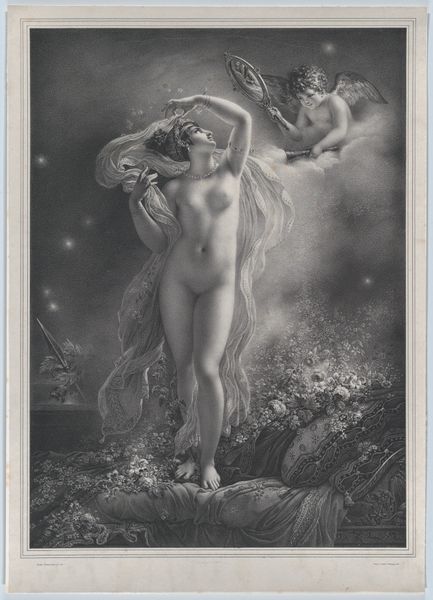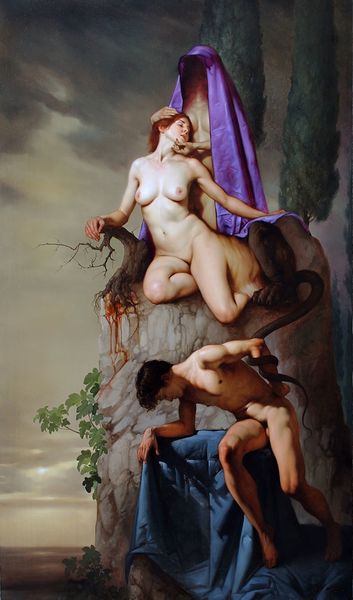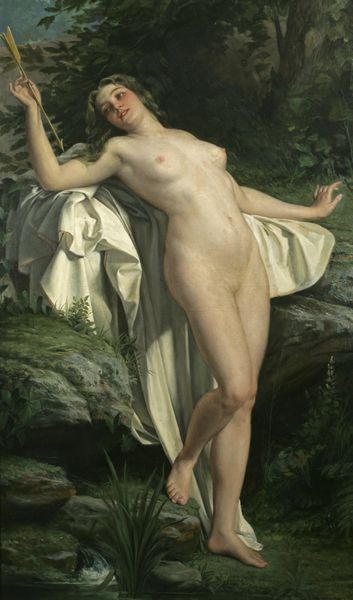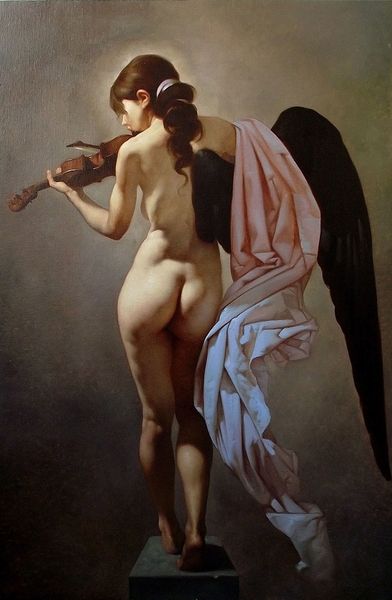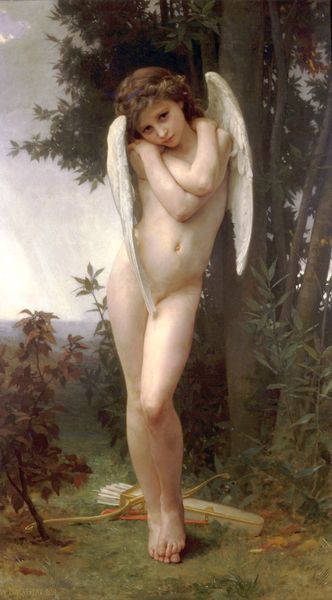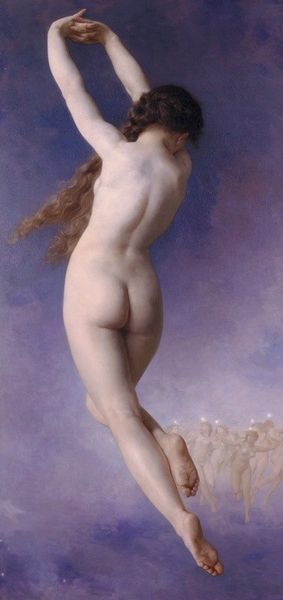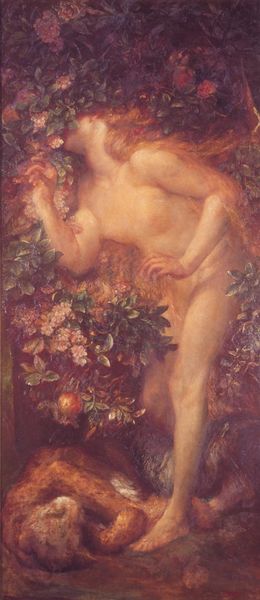
Mademoiselle Lange as Venus 1798
0:00
0:00
annelouisgirodettrioson
Museum der Bildenden Kunste, Leipzig, Germany
painting, oil-paint
#
portrait
#
allegory
#
fantasy art
#
painting
#
oil-paint
#
possibly oil pastel
#
female-nude
#
romanticism
#
surrealism
#
mythology
#
history-painting
#
surrealist
#
nude
#
female-portraits
Copyright: Public domain
Curator: Standing before us is Anne-Louis Girodet's "Mademoiselle Lange as Venus," created in 1798. It's an oil painting, currently housed in the Museum der Bildenden Kunste in Leipzig. Editor: My initial impression is one of both allure and unease. There's something very calculated about her pose, almost performative, underscored by the contrast of the floral softness and the sharp, almost theatrical lighting. Curator: Indeed. Girodet was known for blending neoclassical forms with early Romantic sensibilities. In this allegory, he presents actress Anne-Francoise-Elizabeth Lange as Venus, the goddess of love and beauty. She's caught gazing at her reflection in a mirror held aloft by a cherub, set against a rather dark, enigmatic backdrop. Editor: That contrast is so striking. While the flowers reference spring and beauty, the darkness, especially with the extinguished torch at the bottom, suggests something ending, or perhaps an unveiling. The whole artwork speaks to the ephemeral nature of beauty and youth, themes so relevant for actresses even today. Curator: And there's further nuance in the symbols. Lange seems poised between worlds, literally standing with one foot still on the divan, hinting at the transitions in her life and career, as well as the broader social shifts during the Directoire period in France. Girodet infuses a lot of visual metaphors—almost theatrical props—into this singular painting. Editor: It's impossible to ignore the implied narrative. Was this a commentary on her fame? Did she commission this portrait for a specific purpose, such as reclaiming agency and dictating how to define her career after marriage rumors? It speaks to women’s limited power in the period, even celebrity could be controlled. Curator: Her upward gaze meets that of the viewer reflected in the mirror held by the cherub, making it about our own beauty standards as well. This work plays upon a collective understanding of mythology and gender in Western culture, so familiar even centuries later. The romantic rendering certainly belies a depth beyond its surface. Editor: Considering this context offers a richer view of it beyond face value. Curator: Precisely, art transcends itself. Editor: Thanks for enriching the way I appreciate the work.
Comments
No comments
Be the first to comment and join the conversation on the ultimate creative platform.
